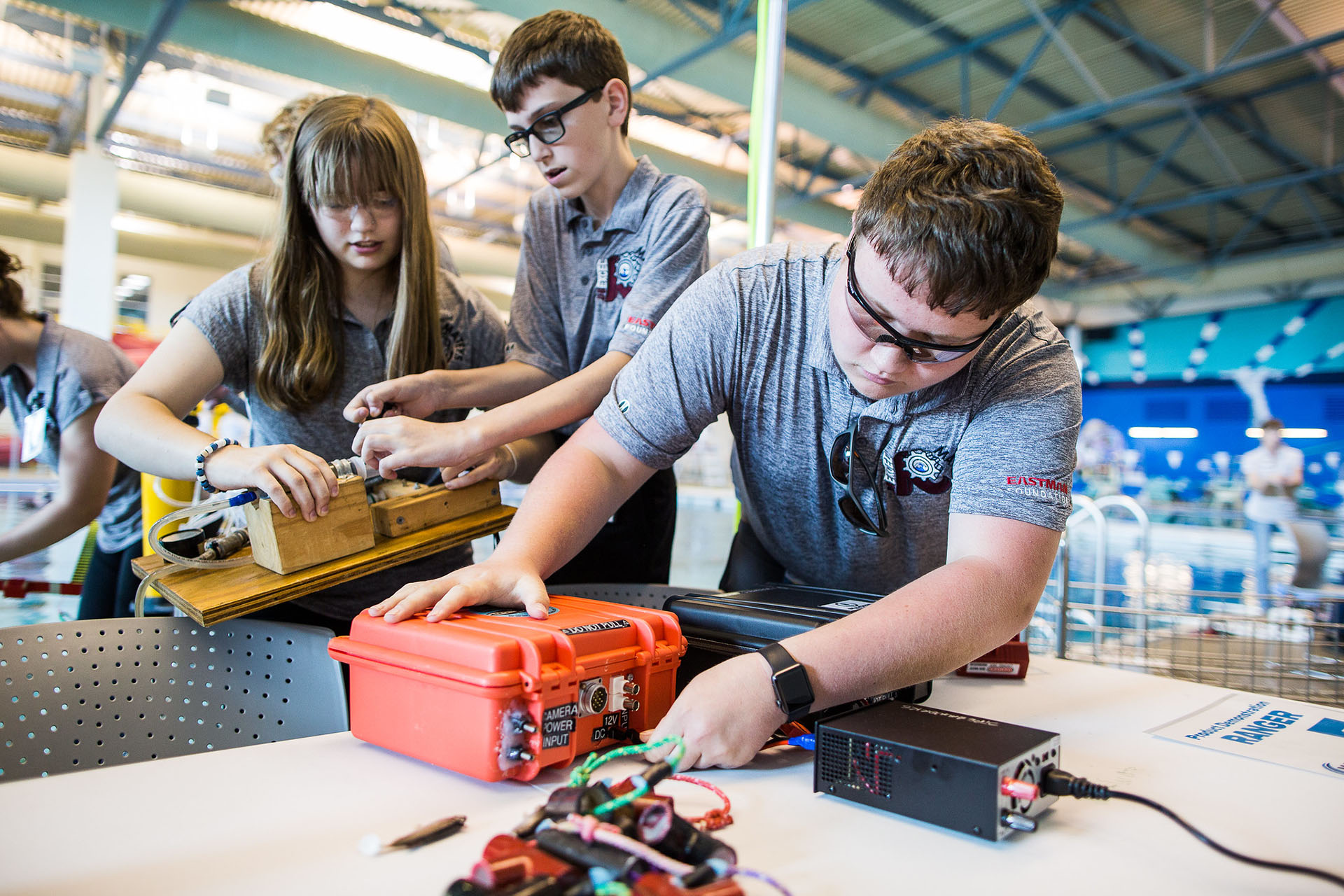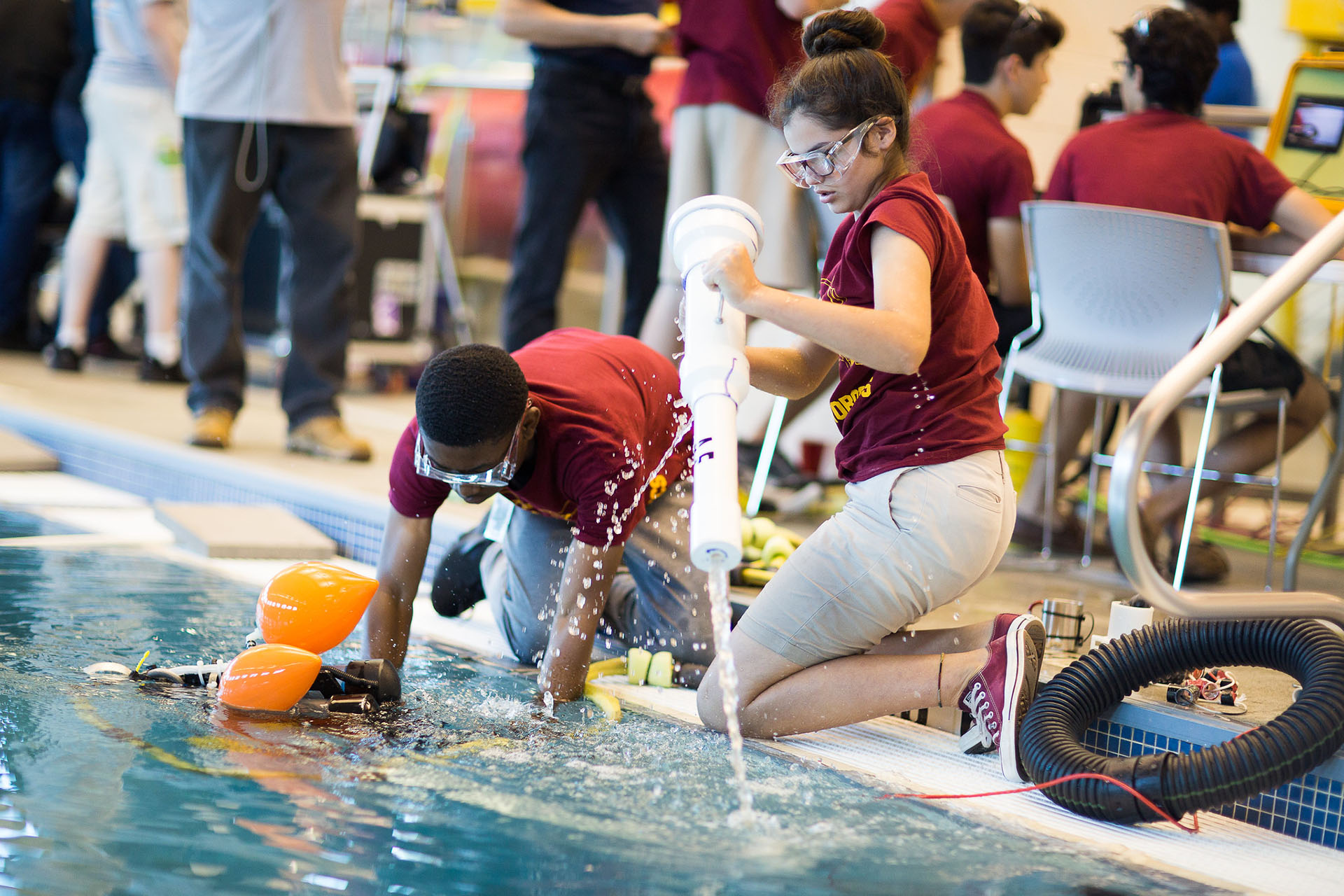MATE ROV Competition
As part of GO-BGC, the MATE ROV Competition will create competition scenarios and design mission tasks that involve float technology and the data collected that will enable project scientists to monitor ocean health.
The MATE ROV Competition uses underwater robots to inspire and challenge students to learn and creatively apply science, technology, engineering, and math (STEM) to solve real-world problems and strengthen their critical thinking, collaboration, entrepreneurship, and innovation.

The MATE ROV Competition challenges students in grades 4-16 from across the U.S. and around the world to engineer ROVs (remotely operated vehicles) to complete a set of mission tasks based on real-world, workplace scenarios. The competition emphasizes and inspires a mindset of entrepreneurship and innovation by requiring students to transform their teams into “start-up” companies that respond to a request for proposals or RFP. In addition to their robots, the student teams also prepare technical reports, create a marketing (poster) display, and deliver engineering presentations.
The competition includes an annual World Championship and a network of 41 (and growing!) regionals that feed into it. It is organized into four competition classes (levels) that range from beginner to advanced – SCOUT – NAVIGATOR – RANGER – EXPLORER. This allows students to progress to the next level as they build upon their knowledge and skills.

In addition to ROVs, the competition often tasks students with engineering other “wet” technologies, such a cap to cover a wellhead and stop the flow of oil and an optical beam transmissometer to measure the opacity of a hydrothermal vent plume. As part of GO-BGC, the MATE ROV Competition will create competition scenarios and design mission tasks that involve float technology and the data collected that will enable project scientists to monitor ocean health.
In 2021, working with University of Washington Argo/BGC float engineers, the MATE ROV Competition will offer a MATE Floats! “satellite” challenge where teams are tasked with building a float that uses active ballasting to descend to depth and back to the surface (i.e., accomplishes one profile). Teams will be evaluated on how many profiles their float can accomplish in 10 minutes.
The challenge will include details on design and building specifications, rules, safety guidelines, and procedures for preparing floats for deployment. Float engineers will also provide resources (e.g. “anatomy of a float”) that will be disseminated to teams.
For more information about the MATE ROV Competition and the 2021 MATE Floats! Satellite Challenge, visit https://materovcompetition.org

